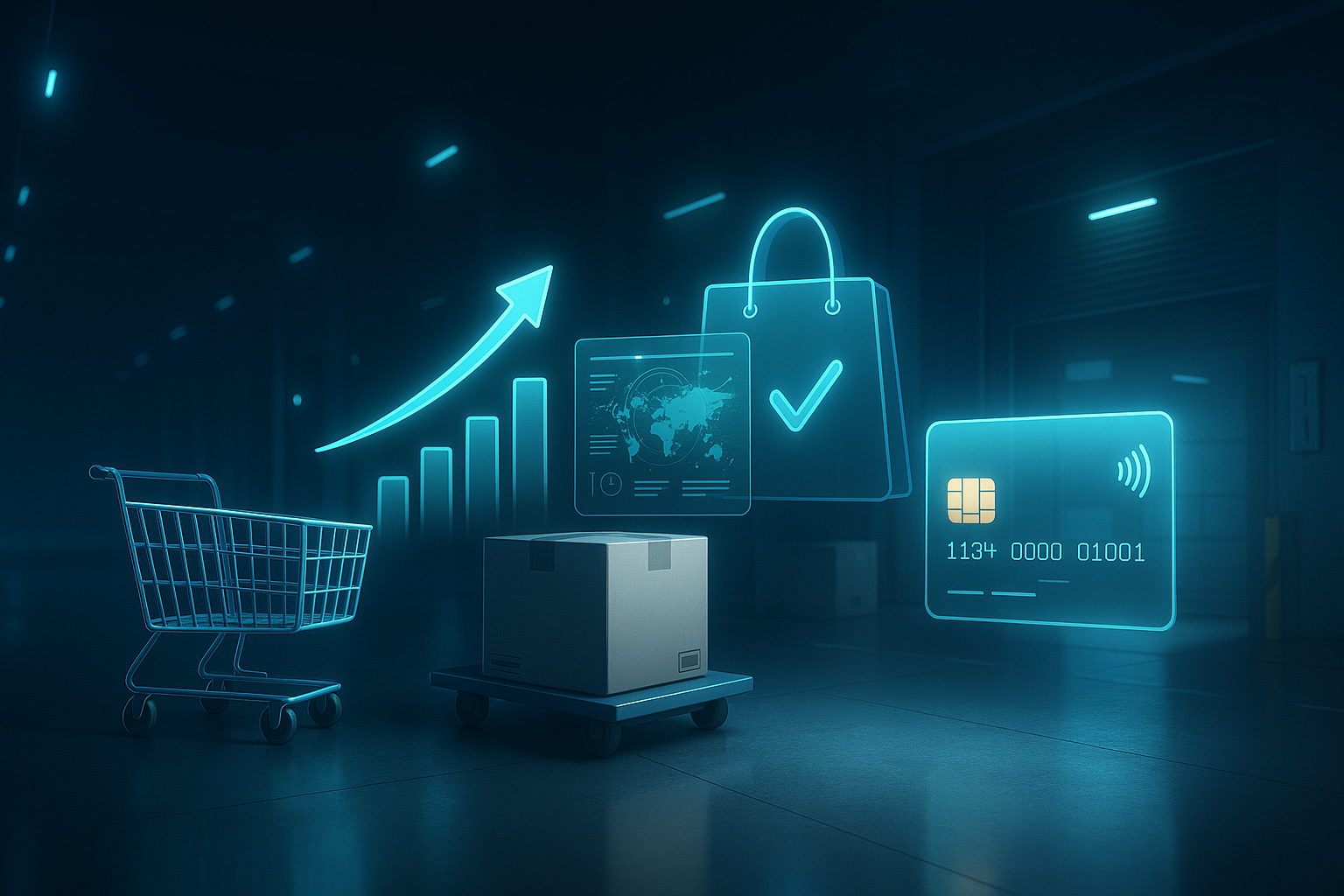

The right B2B eCommerce platform can help you reach more customers, diversify your business’s revenue, and grow your sales. It is an essential component of any B2B eCommerce strategy and serves as the foundation for selling your products online.
But before launching a new eCommerce platform, you need to decide whether you want a Software-as-a-Service (SaaS) or on-premise solution. SaaS platforms run in the cloud, while on-premise solutions run on hardware inside your business’s offices.
Your choice will impact how long it takes to get your eCommerce platform up and running, how your system scales as your business grows, and more.
Choosing between SaaS vs. on-premise software is a big decision, but DJUST is here to guide you through it.
Short on time? Here are the key takeaways
We will kick things off with a quick look at the key differences between SaaS and on-premise platforms.
- SaaS platforms are plug-and-play solutions, while on-premise platforms require a lot of hardware and a team of IT specialists.
- While SaaS software is fairly customizable, on-premise software gives you control over every aspect of your B2B eCommerce platform.
- SaaS solutions can scale up or down over time, while on-premise platforms are costly to upgrade as your business grows.
- SaaS platforms have a fixed monthly cost that includes upgrades. On-premise software requires a huge upfront investment and expensive maintenance. Plus, it does not include upgrades.

The bottom line is that for most businesses, SaaS makes a lot more sense than on-premise. However, both solutions have their pros and cons, so it is worth knowing more about how they stack up.
Let’s dive into the details.
Setup & implementation
Setting up a new B2B eCommerce platform can be daunting. It is not just a new software system — it is a software system that all your online sales depend on.
So, it is important to know how the implementation process differs for SaaS and on-premise platforms and how that can impact your eCommerce business plan.
SaaS
SaaS platforms are “plug-and-play” solutions that do not require any new hardware. The software provider owns and maintains all the technical infrastructure needed to run your eCommerce platform. SaaS platforms are typically easy to use, too.
Regarding implementation, SaaS solutions are quicker to configure and launch than most on-premise solutions. At DJUST, we can implement a new B2B eCommerce platform for your business in less than four months.
On-premise
In contrast, on-premise platforms are more intricate. Your business needs to buy and set up servers and other computer equipment. Typically, the software provider will not help you choose this equipment or connect it to your business’s network. Getting started with on-premise software can be quite challenging.
In addition, implementation for an on-premise solution can take 6-12 months or even longer, depending on the platform and your IT team’s capacity. That is a long time to wait to reach your eCommerce goals. Plus, delays in deploying your platform can derail projects before you can even complete them.
Flexibility, customization, and upgrades
Both SaaS and on-premise eCommerce solutions offer loads of flexibility, but they achieve it in different ways.
SaaS
SaaS platforms are flexible because they are composable and modular. You start with a base software package that includes most features. Later, as your online sales grow, you expand into new markets, or you need more from the platform (i.e., to manage customer service, marketing, visibility, etc.), you can purchase add-on modules with more advanced or specialized features.
SaaS solutions also support custom integrations for B2B construction, B2B retail, and various other industries. Most SaaS systems offer an API for development, too.
Additionally, you get tons of settings to modify your customer interface, product catalogs, order workflows, and more. You can add your own eCommerce copywriting and eCommerce photography, set up different product catalogs for different markets, and more. This adaptability is key to accommodating different eCommerce revenue models.
Another benefit of SaaS software is that it includes upgrades over time. As new technology (such as AI) emerges, your SaaS provider will roll out new features that use it.
Expert advice: SaaS platforms are a great option if your business needs to meet specific online accessibility requirements. Many systems offer built-in tools and functionalities to help you stay compliant. For example, SaaS software can automatically add alt text and labels to content elements, making it easier to stay accessible to all users.
On-premise
On-premise platforms give you control over how they are set up. You decide what hardware to run your eCommerce software on and how your data should be processed and stored. Plus, you can build custom hardware integrations that may not be possible with SaaS solutions.
Importantly, on-premise software does not include automatic upgrades. If you want to add new features, you will need to buy them, develop them yourself — or hire a dedicated programmer to do it. This can be a big undertaking.
Expert advice: You may have come across platform-as-a-service (PaaS) systems while researching SaaS and on-premise software. PaaS is similar to SaaS but requires more development. Think of it as a middle ground between traditional on-premise software and fully managed SaaS systems in terms of development involved.
Scalability
SaaS platforms offer much better eCommerce scalability and performance than on-premise software solutions. (That is a major reason we recommend them to businesses of all sizes!) Basically, SaaS systems scale with your business, while on-premise platforms can have some growing pains.
SaaS
If you use a SaaS B2B eCommerce platform and your customer traffic goes up, no sweat — your provider will simply allocate more server resources to your business.
This flexibility is a big deal if your sales are cyclical. SaaS platform providers can automatically adjust their IT infrastructure to meet your business’s needs. That is a benefit for sustainable eCommerce as well since you avoid wasting energy on overpowered servers to run your software.
In addition, SaaS platforms are modular. So, if your business grows and you need more features, you can simply upgrade your plan to get them — making scaling up or out a breeze.
On-premise
With an on-premise deployment, more traffic could mean having to buy a bigger server and move your platform onto it. If your sales are cyclical, you might have to choose between using an expensive, oversized server during times of slower sales or struggling to get by with a smaller server when traffic peaks.
Security
Your B2B eCommerce platform contains data about your company and your customers. This data needs to be highly secure.
SaaS
In terms of security, there is not much to worry about with SaaS platforms. Since your data is stored on your provider’s servers, most of the security burden falls on them. Most reputable SaaS vendors have strong cybersecurity measures, such as data encryption and 24/7 network monitoring.
One important thing to look for is the ability to manage who can access what data within your software. For example, DJUST offers user permissions that let you tightly control which employees can see order information or edit your workflows.
On-premise
On-premise platforms put all security requirements on your business. Your IT team must ensure your servers are secure against cyber threats. Plus, you have to consider potential physical attacks on your server by unauthorized individuals in your office.
If you develop integrations or new features for an on-premise solution, it is also up to your team to ensure those are secure.
Backup & recovery
Backup and recovery are also a lot easier with SaaS platforms than on-premise platforms.
SaaS
Most SaaS eCommerce software providers automatically back up your business’s data and have entire teams dedicated to this process. This enables you to bounce back quickly after a cyberattack — or if you accidentally delete important data. Experienced providers also have detailed recovery plans that explain how they will help you get through catastrophic events like a ransomware attack.
On-premise
With on-premise eCommerce software, you are responsible for maintaining your own backups. This offers flexibility — you can create new backups as frequently as you want and decide how to store them.
However, many companies with on-premise solutions fall behind on backups. There is often only one person responsible for this, and if they get sick or take a vacation, your data will not be backed up. When that happens, your company could lose important data if something goes wrong.
Maintenance & support
SaaS and on-premise platforms are very different when it comes to maintenance and support.
SaaS
One of the most underrated advantages of SaaS solutions is that they include customer support. If you have a question about adding a new sales workflow, connecting to other systems such as PIM and ERP software, or setting up or using a feature, your software provider will be there to help. Most SaaS providers also have extensive documentation to help you smoothly navigate your software.
Another benefit of SaaS platforms is that you do not have to worry about maintenance. SaaS providers maintain the hardware that runs your platform. They also roll out security updates and bug fixes. So, you do not need an IT team to sell online.
On-premise
With an on-premise solution, you will need an IT team. There is no ongoing support from your software provider, so your IT staff needs to know your software inside and out. Your IT team is also responsible for maintaining the servers that run your eCommerce platform and developing security patches as new threats emerge.
Cost
At the end of the day, many businesses will choose between SaaS and on-premise solutions based on cost. This is another area where SaaS platforms beat out on-premise solutions.
(Note: We cannot give exact prices for SaaS and on-premise software. How much B2B eCommerce platforms cost depends a lot on the size of your business and what features you need.)
SaaS
SaaS platforms require a monthly or annual subscription. In exchange, you get access to the software, customer support, and updates. There are no hidden costs or unexpected bills. If you need to add advanced features as your business grows, your subscription fee will increase, but typically only by a marginal amount.
On-premise
Meanwhile, on-premise platforms require a one-time licensing fee. This is an expensive upfront cost — as much as several years’ worth of access to a SaaS platform. For this fee, you get only the software itself, not any of the equipment needed to run it.
In addition to the upfront cost of buying a server, you can easily spend hundreds of thousands of dollars (or more) each year on IT staff to set up and maintain it. If you need to manage more customer traffic as your business grows, you could be forced to buy another expensive server.
You also do not get updates with on-premise software. If you want to upgrade to the latest version after a few years, you will need to pay another hefty licensing fee.
Our experience is that, over the long run, even the more expensive SaaS platforms are significantly cheaper for B2B businesses than on-premise solutions.
Why SaaS is replacing on-premise deployments
SaaS B2B eCommerce platforms have a lot of advantages over on-premise solutions, and they are becoming the go-to choice for many businesses, especially those with limited IT staff. In fact, Gartner reports that SaaS spending grew nearly 22% — to a staggering $597.3 billion — in the last two years alone!
At DJUST, we are all-in on SaaS deployment because they are a game-changer for sales. We have helped many businesses reach more customers and boost their revenue without having to spend tons of resources on back-end development.
Whether you are launching a new B2B eCommerce platform or moving from an existing on-premise solution, DJUST can get you up and running in four months or less. And we will be with you every step of the way to support your business as it grows.
The bottom line
Choosing between on-premise vs. SaaS software is one of the most important decisions you will make when establishing a B2B eCommerce platform.
While on-premise solutions offer more flexibility than SaaS platforms, they are also more costly, trickier to maintain and scale, and do not come with support or updates.
That is why we recommend choosing a SaaS eCommerce solution like DJUST so you can focus on growing your business and leave building the back end of your platform to us.

-modified.avif)



